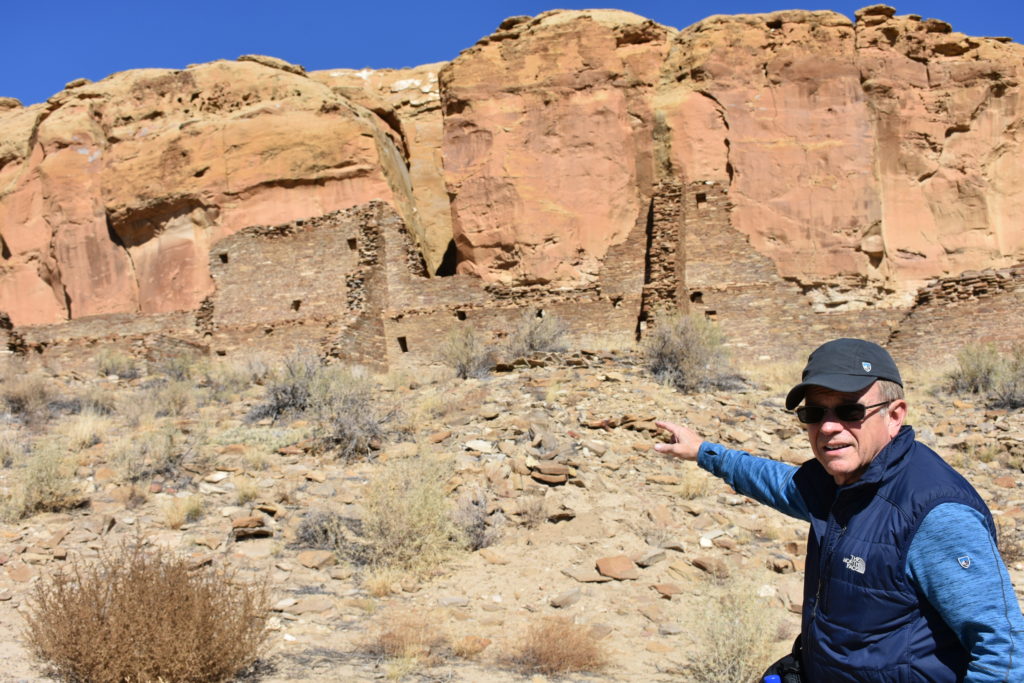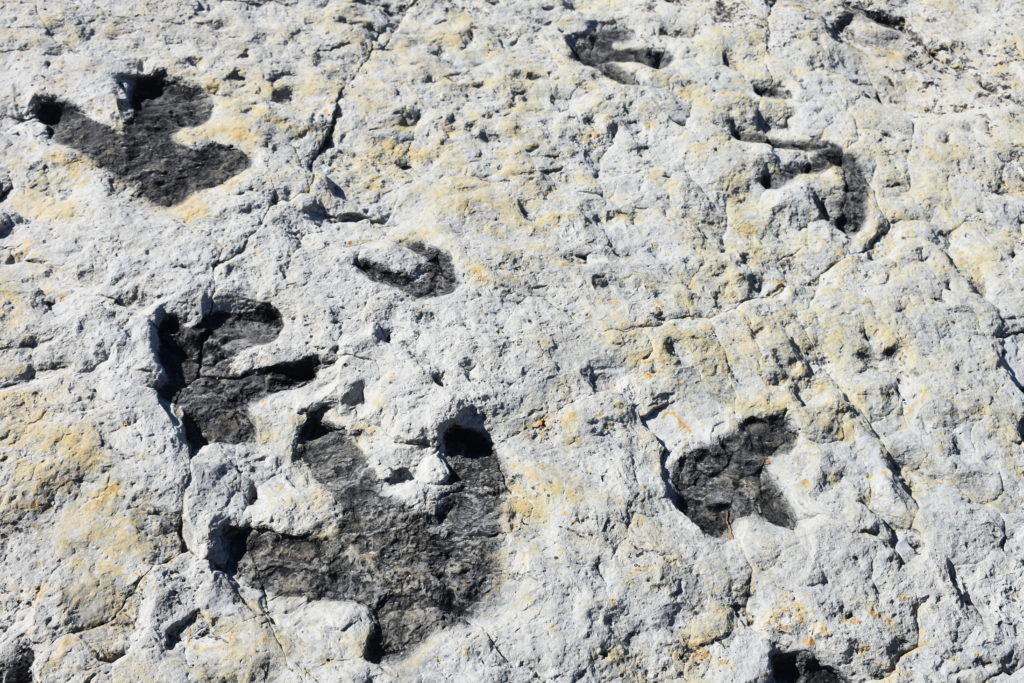
The following are some of the random thoughts I had during my recent two-week tour of northern New Mexico.
Without a doubt, there’s much to see and do in and around Taos and Santa Fe, particularly if you love art, music, spicy food and indigenous cultures. As much as I enjoyed the brilliant colors of the aspen and cottonwood trees in autumn as well as the unique blend of Native American, Hispanic and Anglo cultures, a little-visited historic site managed by the National Park Service turned out to be the highlight of the trip. The Chaco Culture National Historic Park only draws about 80,000 visitors a year (compared with the 11 million plus visitors to the Smoky Mountains and the 4 million or so visitors to both Yellowstone and Yosemite). The park’s isolated location in one of the Southwest’s least populated areas and its limited accessibility by dirt roads explains why most tourists by-pass this archaeological gem. What a shame.
The Anasazi Chaco Culture, a predecessor of what today we call the Pueblo Culture occupied this inhospitable, high desert from about 850 to 1250 A.D. Like today, this part of New Mexico only received about 8 inches of rain annually during those four centuries. Temperatures range from -38 degrees F to 102 degrees F, with daily swings of 60 degrees. Despite these unfavorable conditions, the Chacoan people chose this site to build acres upon acres of multi-storied “great houses”, kivas and other structures. Without modern tools or power equipment, they quarried sandstone blocks from the surrounding mesas, hauled logs from mountain forests hundreds of miles away, and made adobe bricks from the area’s intermittent arroyos. Pueblo Bonito, the park’s most impressive ruin, is said to have rivaled the Roman Colosseum in size if not in detail. But the enormity of the Chaco Canyon complex is deceptive. Very few people actually lived there year round. Archaeologists believe the Canyon’s dramatic gorges and eroded rocks had some special significance to these ancient people which enticed them to gather there annually for religious ceremonies – a Native American Mecca of sorts.
Like other pre-Columbian cultures, the Chacoans had a well-developed understanding of astronomy which allowed them to align their elaborate buildings with both solar and lunar cycles. Apart from equinoxes and solstices, Chacoans had identified the more obscure 18.6 year “lunar excursion cycle”. Additionally, petroglyphs on canyon walls next to the site appear to depict celestial occurrences like the supernova associated with the Crab Nebula in 1054 A.D. If that doesn’t impress you, how about this petroglyph from nearby Petroglyph National Monument?

Could this be a record of some astronomical event – perhaps two comets chasing the sun while being observed by someone with his arms raised? I overheard one park ranger say the petroglyph shows the second stage of a rocket separating from its first stage. Amazing.
And then something disastrous happened beginning in the Twelfth Century and culminating in the Thirteenth. Whatever it was, it caused the Chacoan people to abandon their desert complex. At least some of them migrated to southwestern Colorado and settled among the people responsible for the building of Mesa Verde. There’s evidence that the cliff dwelling inhabitants of that place initially tried to assimilate the Chacoan people, but a series of droughts and a prolonged period of cold weather ensued making that impossible. Eventually, the Chacoan/Mesa Verde culture came to an end around 1300 A.D. When the Spanish explorers and missionaries arrived centuries later, they found both sites abandoned and in ruins.
Certainly, there’s more to this story and some of what I’ve written may be proven wrong; however, what prompted me to write this blog hopefully is obvious. Is there anything to be learned from the rise and fall of the Chaco Culture? It’s easy to let our Twenty-First Century conceit cause us to make analogies to today’s problems. Climate change, immigration, resource management are just a few that come to mind. But, in fact, modern Americans have little in common with the ancient Chacoan people. Notwithstanding their apparent engineering and astronomical skills, the Chacoans lacked a written language to memorialize what they knew about these subjects. They had not yet developed the wheel nor did they regularly use animals for transportation (the horse had not yet been introduced to the Americas). They had remarkably extensive networks of trade, evidenced by New Mexican turquoise being found in archaeological sites thousands of miles away, but many technologies that were already present in other parts of the Americas (e.g., use of the abacus for math, diversion of water by canals and aqueducts, metallurgy, domestication of most animals) never made it to this part of the American Southwest.
Sometimes, the only thing that can be learned from the past is that we don’t know as much as we think we know. Not every mystery begs to be solved. Not every tragedy can be avoided.
On the way back to Denver, I stopped by Dinosaur Ridge to see the footprints left by these legendary beasts during the Cretaceous Period (145 to 65 million years ago). The place was overrun with schoolchildren – all happy to be out of the classroom on that unseasonably cold day. I looked up at the crystal clear Colorado sky just to be sure no comets were headed our way. Seeing none, I marked the human race safe for another day.


Hi Peter,
I just wanted to let you know how much I enjoy your posts both here and on Facebook. You lived next door to my best friend Maureen when we were in high school, and I found you when trying to find Maureen or her family online. I haven’t been able to find her; does your family keep in touch? I lived on Beech St. too.
Michele (Giordano) White
Hi, I think your site might be having browser compatibility issues.
When I look at your website in Opera, it looks fine but when opening in Internet Explorer, it has some overlapping.
I just wanted to give you a quick heads up! Other then that, terrific blog! http://www.Vintagehouserestaurant.com/
Thanks for the head’s up.
Can I simply say what a comfort to uncover an individual who genuinely knows
what they’re talking about over the internet.
You certainly realize how to bring an issue to light and make it important.
More people ought to check this out and understand this side
of the story. I was surprised you are not more popular since
you surely possess the gift.